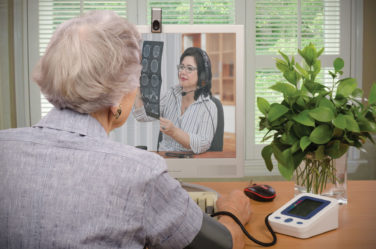Through our work with caregivers, we have learned valuable lessons about the caregiver and their needs for support and information, and offer up the following considerations for your next caregiver initiative.
Defined by Their Relationship, Not Their Role: “I’m not a caregiver. I am just helping my sister cope.” Caregivers view themselves as daughters, sons, mothers, fathers, friends, and neighbors who care deeply about a person with a disease. Although they selflessly take on everything from medical decision-making and ER runs to medication management, they don’t define themselves by their functional role as “caregiver” but by their relationship to their loved one. “I’m just doing what I can to help him fight.” Messaging needs to address this selfless perspective and marketers must understand that the “caregiver” label may not resonate.
Tease Out Decision-Making Dynamics: Caregiver roles vary based on a variety of factors, including relationship status with the patient, gender, age, economic status, culture, the chronic or acute nature of the disease, and their proximity to the patient. Caregiver and patient focus groups and advisory boards that tease out the decision-making dynamics between patients and caregivers are essential in guiding communications that reflect the interplay between them and respect both roles.
Information as a Source of Strength: Caregivers have no time but are in constant search of information to help them gain confidence as an ally for the patient. Reaching them online is efficient and effective through credible websites—even clinically focused ones tailored for a patient audience—as patients and caregivers are often searching for clinical trial and treatment information. In addition, tailored information pushed to the caregiver at crucial steps along their caregiving journey will help them with critical thinking at the times they need it most.
Three-Way Shared Decision Making: Caregivers report having a good and trusting role with their loved one’s primary treating physician. Tools that can foster an even better relationship are invaluable, especially those that increase shared decision-making between patient, physician, and caregiver. Time permitting, engage all three in discussions early in the treatment journey. Learning about each other’s decision-making preferences can be an effective relationship builder and ease some of the stress around difficult medical decisions.
Lighten Their Load: The caregiver is often taxi driver, delivery person, and personal shopper all in one. Providing tangible, tailored support and resources to make their logistical responsibilities less time-intensive and less costly are meaningful ways to ease their burden.
The Patient Comes First, But: Finally, the caregiver often sublimates their own needs to ensure the patient comes first. Though admirable, this can be a mental drain on a caregiver, leading to their own health issues. Caregiver initiatives that provide inspiration, respite time, and the ability to disconnect while others take on the caregiving burden allow the caregiver to “lean out” temporarily so they can lean back into caregiving and all that goes with it.










